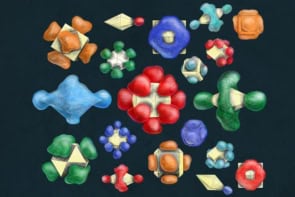
Key to many of graphene’s wonder properties is the quality of its crystal lattice. However defects from the regular hexagonal honeycomb graphene lattice inevitably occur during fabrication and processing. Anastassia Sorkin and Haibin Su from Nanyang Technological University in Singapore, and The Hong Kong University of Science and Technology have now reported results from simulations that may help towards a better understanding of not just how defects form but self-healing mechanisms as well.
Sorkin and Haibin focus their calculations on graphene nanoribbons. Although with their finite narrow width nanoribbons lack the 2D symmetry of large sheets of graphene, they are particularly attractive for electronic applications because it is possible to engineer their bandgap. However defects within the ribbon can have significant effects on electronic, as well as thermal and mechanical properties.
The researchers use density functional tight-binding molecular dynamics to model the fusion of fragments of a polygonal carbon lattice comprising six (corannulenes) and seven (sumanenes) polygons. Previous studies have pointed towards the role of corannulenes and sumanenes in graphene fabrication, particularly under certain conditions for the commonly adopted chemical vapour deposition (CVD) approach.
Nanoribbons on the mend
The calculations showed how various defects and grain boundaries arise as different combinations of sumanenes and corannulenes fuse at different temperatures and over different periods of time. They also showed how defects, such as rotated bonds (Stone Wales) or gaps in the lattice can mend.
Some of the most common graphene defects studied in the calculations are where patches or “domains” of the crystal lattice are oriented in different directions separated by strings of polygons. These differently oriented domains are often attributed to lattice mismatches between the graphene forming and the metal beneath. Sorkin and Su’s calculations give further insights into these systems, indicating that as they point out in their report, “the intermediate structure experiences disintegration followed by a remarkable re-building process to form graphene nanoribbons with differently oriented grains.”
The study predicts the existence of a defect described as an “inverse Stone Wales” that they hope to confirm with future experimental studies, as well as highlighting the importance of edges in generating, modifying and mending defects. They conclude their report, “This study of dynamic structural evolution directly from carbon fragments offers one platform for advancing understanding of edge’s roles in formation and transformation of carbon nanostructures for potential electronic, mechanical, and thermal applications.”
Full details are available in Nano Futures.



